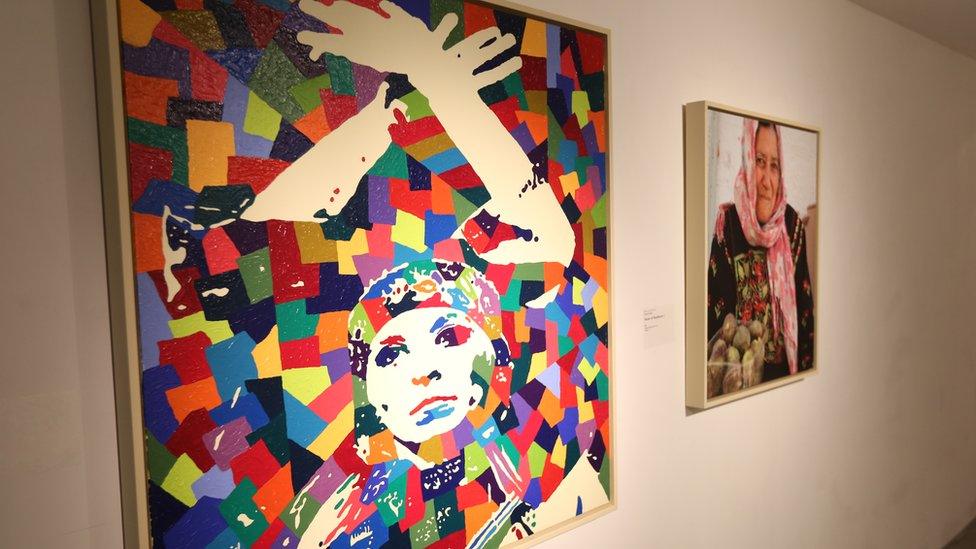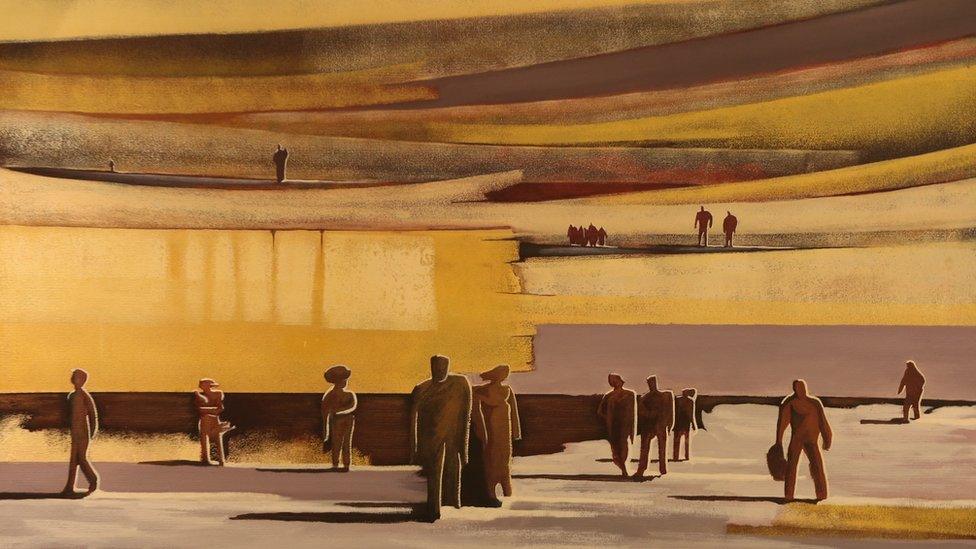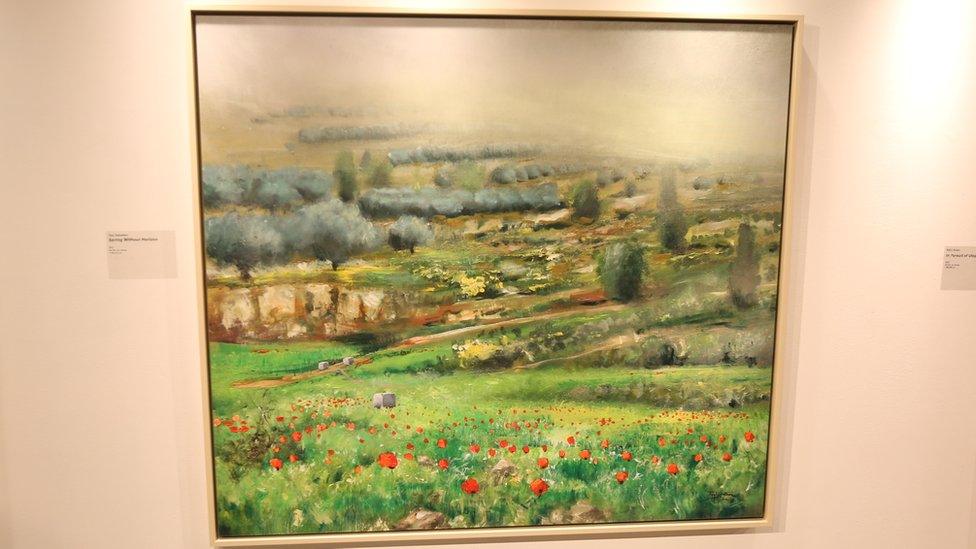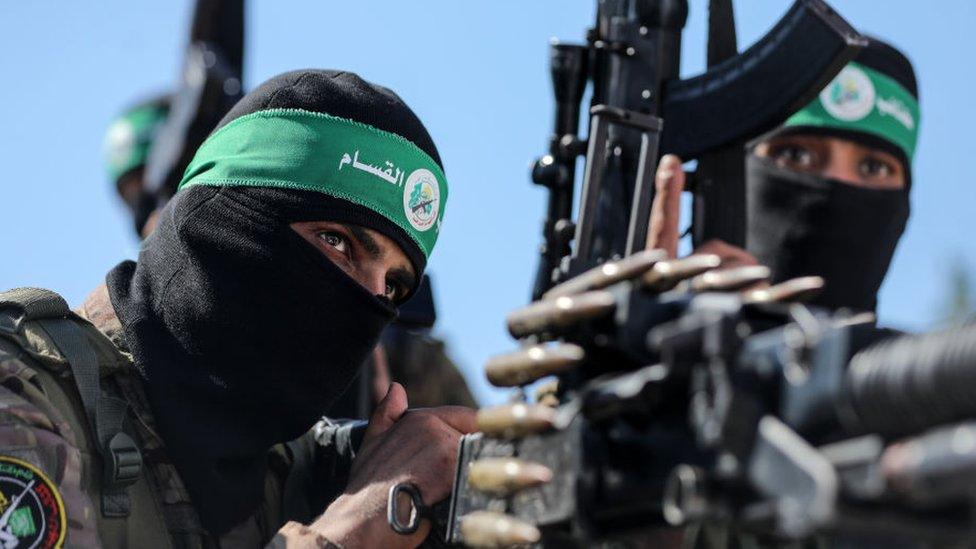Exhibition of Palestinian art opens in central London
- Published

A painting by artist Nameer Qassim on exhibition at the P21 Gallery
An exhibition of Palestinian art has opened its doors at the P21 Gallery in central London.
It comes at a divisive time in the art world.
Several venues in Europe and North America have cancelled exhibitions and events with Palestinian and pro-Palestine artists, mostly due to comments made over the Israel-Gaza war. And in Istanbul, works of Israeli artists were removed from an exhibition to avoid protests from the public.
"From Palestine with art" was already showcased at the 2022 Venice Biennale but the organisers say, given the current climate, they feel the need to bring it back into the spotlight.
"We're trying to project the true image of Palestinians: we're people who like peace, we're human," says curator and director of the Palestine Museum US, Faisal Saleh.

Gaza artist Mohammed Alhaj painted 'Displacement' in 2021
He walks me through the two floors of the exhibition, giving me little anecdotes on some of the 20 artists who are showcased here.
Walking among bright paintings, intimate photos and bronze sculptures, you cannot help but get the sense of the vivacity of an art scene that is rarely talked about.
Eventually, Mr Saleh stops in front of a painting portraying faceless people wandering aimlessly in an abstract space. The author, Mohammed Alhaj, is a painter from Gaza.
"It could be the US-Mexico border, it could be the border between Turkey and Greece," Mr Saleh says.
"When Mohammed Alhaj painted this in 2021, he meant it to be universal. He had no idea it was going to be him," he adds, referring to the ongoing war.
Mohammed Alhaj is one of the hundreds of thousands of Palestinians displaced in Gaza since the war began.
He has been sheltering with his family in a tent in Al Mawasi, in southern Gaza. It is a narrow strip of land by the sea, with few buildings and mostly consisting of sandy dunes and agricultural land.
In recent weeks, communications have become increasingly difficult, but I managed to speak with him briefly via voice messages.
"The situation is really bad, I can't describe how bad it is," he told me.
"Salty water is difficult to get, drinking water is difficult to get. The days are exhausting. Those who had money, are running out. Those who had the ability to endure this, no longer have strength."
Mr Alhaj tells me he is now trying to get out of Gaza with his wife and four children through the Rafah border crossing.

Taqi Sabateen portrays the landscape of the West Bank, where he lives
At the exhibition, one whole wall is reserved for landscape paintings. They tell the tale of a beautiful, war-torn land.
In some of them, among lush olive groves, you can spot signs of roadblocks and Israeli settlements in the occupied West Bank.
Two of these paintings are by known graffiti artist Taqi Sabateen, who lives in a village there.
"I did a painting full of hope, no struggling, no violence," he tells me on a call a few days before the exhibition. "I took this chance to show people the beauty of Palestine."
When I ask him how he feels having his work on display in London, he takes a deep sigh.
"This exhibition is an emergency archive," he says. "My friends in Gaza are sending me photos of their studios, all their paintings have been damaged. These paintings that are [in London], are on the safe side."
"It's good. I feel like I have part of me out of this mess."

Listen to the best of BBC Radio London on Sounds and follow BBC London on Facebook, external, X, external and Instagram, external. Send your story ideas to hello.bbclondon@bbc.co.uk
